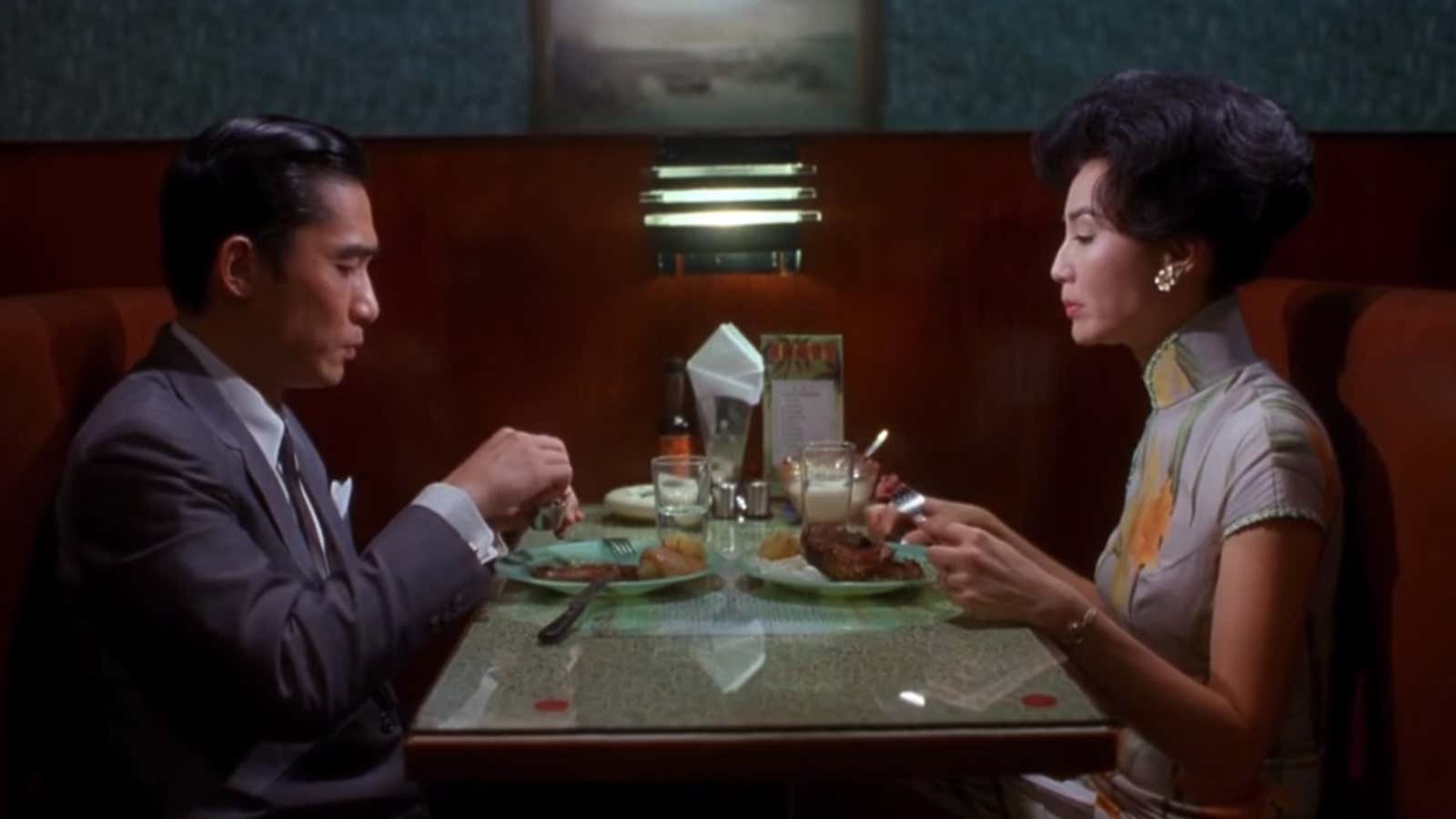David Lynch’s surreal film noir Mulholland Drive is the greatest movie of the 21st century, according to BBC’s recent survey of 177 film critics. But the number two-ranked film is a dark romance much less familiar to global audiences, called In the Mood for Love.
The film, directed by Wong Kar-wai, is set in 1960s Hong Kong. It tells the story of two neighbors, a man and a woman, who discover their spouses are cheating on them with each other. They come together to deal with the pain, and gradually develop their own halting romance. Of the 177 critics BBC polled, 55 were women and 122 men. Wong’s film got the “highest number of votes“ from these 55 female critics, while 13 critics (three women and 10 men) rated it as their top movie of the 21st century.
What’s the hook? Beauty and heartache.
Missy Schwartz, one of the female critics who rated the film the top movie of the 21st century, wrote in a 2008 review about the film’s leading couple:
Maggie Cheung and [Tony] Leung, perfectly understated, fall in love after learning their spouses are having an affair. Sensuous cinematography and another haunting score (this one from [composer] Shigeru Umebayashi) make Love a masterpiece of palpable heartache.
The film offers “almost unworldly, dream-like beauty,” the Guardian’s Peter Walker wrote. The two main characters—Cheung, in a series of elegant traditional Chinese cheongsam dresses, and Leung, with slicked hair and a gloomy face—are “among the most gorgeous in film history,” Walker notes. You can see the melancholy couple in the film’s trailer below:
In the Mood for Love is also a masterpiece in terms of its shots and the meaning behind them. As the US-based film critic Evan Puschak (aka The Nerdwriter) analyzed in a video, for the 12 minutes of the film, every single shot is a “frame within a frame,” which means every shot features characters not only framed by the film screen itself but also internal shapes like door frames or window grids.
The frames reflect that in a conservative society, the couple’s love and desire are twisted and under surveillance, and can only end up in vain, Puschak notes.
You can watch the 100-minute film with English subtitles on YouTube.
Tom Tsui contributed to this article.
